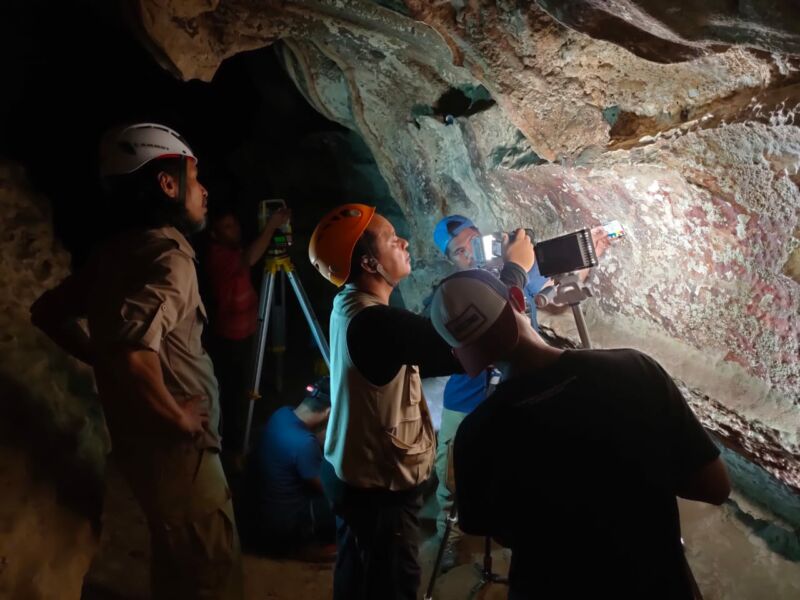Climate change is erasing humanity’s oldest art

Enlarge / Detailed rock-art recording by ARKENAS archaeologist in Maros-Pangkep. (credit: Adhi Agus Oktaviana)
The limestone caves and rock shelters of Indonesia's southern Sulawesi island hold the oldest traces of human art and storytelling, dating back more than 40,000 years. Paintings adorn the walls of at least 300 sites in the karst hills of Maros-Pangkep, with more almost certainly waiting to be rediscovered. But archaeologists say humanity's oldest art is crumbling before their very eyes.
"We have recorded rapid loss of hand-sized spall flakes from these ancient art panels over a single season (less than five months)," said archaeologist Rustan Lebe of Makassar's culture heritage department.
Erasing historyThe culprit is salt. As water flows through a limestone cave system, it carries minerals from the local bedrock, and the minerals eventually end up in the limestone. At the limestone's surface, those minerals oxidize into a case-hardened rocky crust. Nearly all of the oldest rock art in Maros-Pangkep-like the oldest drawing in the world that depicts an actual object-is painted in red or mulberry-purple pigment on that hard outer layer. The rock is resistant to most weathering, providing a durable canvas for humanity's oldest artwork.
Read 20 remaining paragraphs | Comments